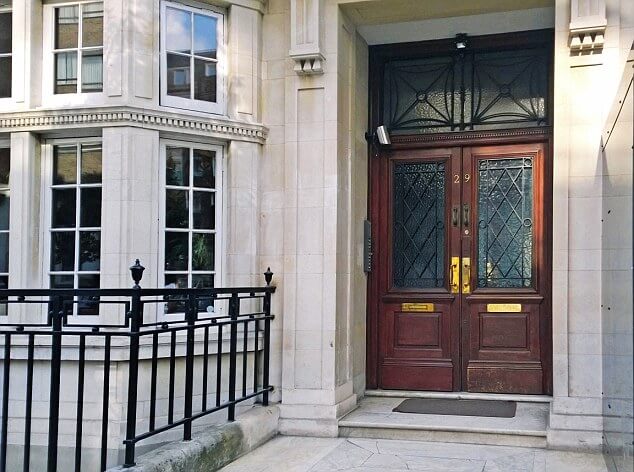
by John McCarthy Consulting Ltd. | Jan 14, 2020 | Blog, News
A question that I often get asked is: how are changes in depreciation policy accounted for?
The follow up question usually asked is whether such changes are accounted for prospectively or retrospectively under FRS 102?
The answer, however, depends on whether the change is a change in ‘estimate’ or a change in accounting ‘policy’.
Change in accounting estimate
Whilst commonly referred to as a ‘depreciation policy’, the depreciation method used is actually an accounting estimate (as detailed in FRS 102 paragraph 17.23).
For example, an entity changing from the reducing balance method to a straight line basis of depreciation, should account for this as a change in accounting estimate, in line with FRS 102 paragraph 10.16, by applying the change prospectively from the date of the change.
Both the useful life and residual value of an asset are accounting estimates. These estimates should be reviewed and updated, where necessary, in accordance with FRS 102 paragraph 17.19. Any amendments to either useful life or residual value are also applied prospectively from the date of change.
Change of accounting policy
When an entity decides to change where a depreciation charge is presented in the accounts, for example, changing its classification from cost of sales to administrative expenses, this would be deemed to be a change of accounting policy (unless, for example, there is a change in circumstance e.g. because of a change in production methods, meaning that the asset is now being used in a different way – in which case the change in presentation would be actioned prospectively from the date of change).
Under FRS 102 paragraph 10.8, this change must result in the financial statements providing reliable and more relevant information about the effects of transactions on the entity’s financial position or performance. When this criteria is met, entities should account for this change in accounting policy retrospectively and therefore the relevant depreciation charge for the prior period should also be reclassified.
If ever in doubt about the applicable rule in the case of your technical question please e-mail us at john@jmcc.ie and we will let you know if there is a charge for your technical question and how long it will take us to generate a reply. Usually technical questions are answered in 48 hours.
For more in technical accounting topics see our online webinars accessible for up to one year from date of purchase. There are 20 topics available and more are added all the time.
Topics include Investment Property Accounting, FRS 105, Common Errors in FRS 102 Accounting and the latest on FRS 105 and company law, visit our online webinar training website. Once viewing is completed, customers will receive a CPD Certificate confirming their learning.
See also our on-demand webinars on AML, accessible at any time and the new requirement for the AML Business Risk Assessment.

by John McCarthy Consulting Ltd. | Dec 18, 2019 | Blog, News
A new requirement – to protect firms against the risk of money laundering – came into law last year, but many firms may not yet have prepared the relevant document.
The Fourth Money Laundering Directive (2015/849/EC) was transposed into Irish legislation in November 2018 by way of the Criminal Justice (Money Laundering and Terrorist Financing), (Amendment) Act, 2018 (the “2018 Act”).
One of the main changes introduced by the 2018 Act is that it introduces the requirement in Section 30A to carry out and document a Firm-Wide Business Risk Assessment of the business/firm itself.
To assist accounting entities, we have prepared a Word template which retails for €60+VAT, available at this link.
We have also produced a 44 minute webinar on how to prepare the Firm Wide Business Risk Assessment.
If you have already prepared the document, it may need updated for changes to any of the five key areas listed below.
Our Firm-Wide Business Risk Assessment template is pre-populated with some text to help you prepare the document. You simply remove the example text and insert text that is more appropriate concentrating on the five key areas that under Section 30A. These are:
-
- Clients of the firm – who are they;
- Products and services provided – how might they be abused for money laundering;
- Countries that our clients operate in and which may present certain geographic risks;
- Transactions we are involved in (e.g. certain clients’ money and similar transactions may pose additional risk); and
- Delivery channels e.g. do we always meet our clients face to face? If you do, this would be a risk mitigating factor.
The document is based on the professional guidance produced by the CCAB in its document called the CCAB-I Technical Release 01/2019.
Please find links here to our:
- Webinar on AML Business-Wide Risk Assessment – €45
- Word template containing all the guidance you should need to prepare the Business Risk Assessment – €60+VAT
Our new fully updated AML Policies & Procedures Manual includes a section that fully deals with these requirements and is now available here. The Manual is updated for the Criminal Justice (Money Laundering and Terrorist Financing) Acts, 2010 to 2018 which came into force on 26 November 2018. It retails at €150+VAT.
See also further on-demand webinars on AML, accessible at any time.
Other webinar topics include Investment Property Accounting, FRS 105, Common Errors in FRS 102 Accounting and the latest on FRS 105 and company law, visit our online webinar training website.
Once viewing is completed, customers will receive a CPD Certificate confirming their learning.

by John McCarthy Consulting Ltd. | Dec 4, 2019 | Blog, News
Journalists at the London Times are to be congratulated for today, 4 December 2019, exposing a web of alleged money laundering centred on a company formations business based in London.
Of course, the story was originally covered by Guardian journalist Oliver Bullough in 2016 and in his 2018 book ‘Moneyland’.
The Times reported: ‘Leaked documents show links to businesses set up by Formations House, a London-based company at no. 29 Harley Street, that establishes and helps to manage companies, and scams involving more than £300 million.’
‘These include vintage wine frauds, fake stock market tipsters, dodgy gold and diamond traders, overpriced land investment schemes and a Hollywood heist carried out by a bogus aristocrat.’
One of its off-the-shelf companies dates back to 2002 and is for sale for £75,000 while a more recently incorporated company in June 2018 sells for £99.
The message for accountants is to make sure that your AML take-on procedures are thorough. The best place to stop a money launderer from becoming one of your clients is at the beginning of the business relationship.
Our new fully updated AML Policies & Procedures Manual includes a section that fully deals with these requirements and is now available here.
It is fully updated for the Criminal Justice (Money Laundering and Terrorist Financing) Acts, 2010 to 2018 which came into force on 26 November 2018. It retails at €150+VAT.
See also our on-demand webinars on AML, accessible at any time.
Other webinar topics include Investment Property Accounting, FRS 105, Common Errors in FRS 102 Accounting and the latest on FRS 105 and company law, visit our online webinar training website. Once viewing is completed, customers will receive a CPD Certificate confirming their learning.

by John McCarthy Consulting Ltd. | Nov 16, 2019 | Blog, News
As we pointed out in our last two blogs here and here, Carillion was less than transparent in its 2016 financial statements about its reverse factoring arrangements.
For a much better explanation of supply chain financing (an alternative name for reverse factoring), see Note 19 ‘Trade and Other Payables’ on page 177 of the 2018 financial statements of AstraZeneca Plc.
Since Carillion commenced the arrangement in 2012 , Carillion’s customers were taking longer and longer to pay – by 2016, receivables were 38% of sales. Carillion was taking even longer to pay its suppliers. By 2016, if you include the reverse factoring, payables were around 50% of sales, or six months.
As Carillion was a very low-margin business, its operating margin (operating profit/sales) over the 10 years from 2006 was highly variable, but was in the range of 1% to 4% according to the LBS article. Its earnings margin (earnings/sales) was between 2% and 3%.
But what did these numbers actually mean? Long-term contracting always rings alarm bells because it offers companies discretion over when to report the income from a contract, with the risk that they will be tempted to report revenues earlier and costs later. Carillion’s financial statements offered no clue as to how it was accounting for long-term contracts.
IFRS 15 on Revenue Recognition would have forced the company to write down retained earnings by well over £100 million, according to a 2017 disclosure note. Apparently, Carillion included the change in the reverse factoring creditor – essentially a financing cash flow – as an operating flow in the calculation of operating cash flow and thus in the calculation of cash conversion.
In the 2016 financial statements, Carillion reported operating profit of £145 million and an operating cash flow of £115 million, which is a decent cash conversion ratio. But that operating cash flow was increased by the approx. £200 million increase in ‘other creditors’ during the year. Without that, operating cash flow would have been £-85 million.
For more on the latest rule changes on Investment Property Accounting please see our webinar on ‘Investment Property Accounting under FRS 102’.
See our completely up to date 2019 AML Policies & Procedures Manual for Accountants.
Also see our newest engagement letter publications for Partnership Compilation including Tax Engagement Letter under FRS 102 and FRS 105 for €50 each.
by John McCarthy Consulting Ltd. | Nov 10, 2019 | Blog, News
Factoring in Ireland and the UK worth more than €400 billion.
Last week we discussed how reverse factoring works. Now we look at how it works in a little more detail.
Broadly there are two different objectives from the originator for such schemes:
1) Supplier focused – to support smaller suppliers
2) Company focused – to support the originator’s working capital management and financing.
Whilst these two objectives are quite different, it is often difficult to assess from the available disclosure what the company’s objective is.
Normal payment terms might see a purchaser pay a supplier within thirty days. The switch to a reverse factoring facility might also see the payment terms increase, to as much as 120 days, as the facility provider will agree terms with the originator. Any increase in payment period will have the effect of improving the originator’s working capital cycle.
How prevalent is reverse factoring?
It is difficult to get accurate and up-to-date data but the European Factoring Association estimates that the total of factoring and reverse factoring for the UK & Ireland combined was £350bn (or over €400bn) in 2017.
Collapse of Carillion
According to a January 2018 analysis by the London Business School (LBS), Carillion used reverse factoring to its detriment.
Carillion was less than transparent about this arrangement in its 2016 financial statements. The facility was recorded in Carillion’s balance sheet within ‘other creditors’ of £760.5 million, on page 118 of the 2016 financial statements – without any explicit note.
More to follow next week in our last blog on reverse factoring.
For more on company law matters please see our webinar on ‘Company Law Update’.
See our completely up to date 2019 AML Policies & Procedures Manual for Accountants.
Also see our newest engagement letter publications for Partnership Compilation including Tax Engagement Letter under FRS 102 and FRS 105 for €50 each.









